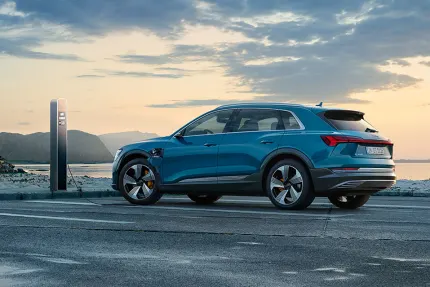

One of the most commonly seen types of hybrid vehicle, the PHEV is usually what comes to mind when people use the term ‘hybrid car’. The plug-in hybrid type, as the name suggests, requires plugging into a power source to charge the electric battery. Unlike regular hybrids however, the plug-in varieties tend to have higher battery capacities and can drive short distances on all-electric power.
FHEVs have both a combustion engine and a battery. They can run solely on the combustion engine or solely the electric engine or a combination of the two.
MHEVs have both an electric and combustion engine however, unlike the FHEVs, the electric part of the engine can’t power the car on it’s own. Instead, the electric battery will assist the engine. The mild hybrid recharges its electric battery through regenerative braking, so there’s no need for plug in charging.
BEVs are fully electric vehicles that run on rechargeable batteries alone. You can charge them up using a domestic plug, although this does take longer. A wall mounted charger installed at home or a public charging point are best.
FCEVs powered by hydrogen, are the cars of the future. They produce no harmful emissions emitting only water vapour and warm air. Instead of needing to charge them up you’ll be able to refill them with pure hydrogen gas at hydrogen fuel stations. The worlds first hydrogen car was produced in 2014 and is still in development.